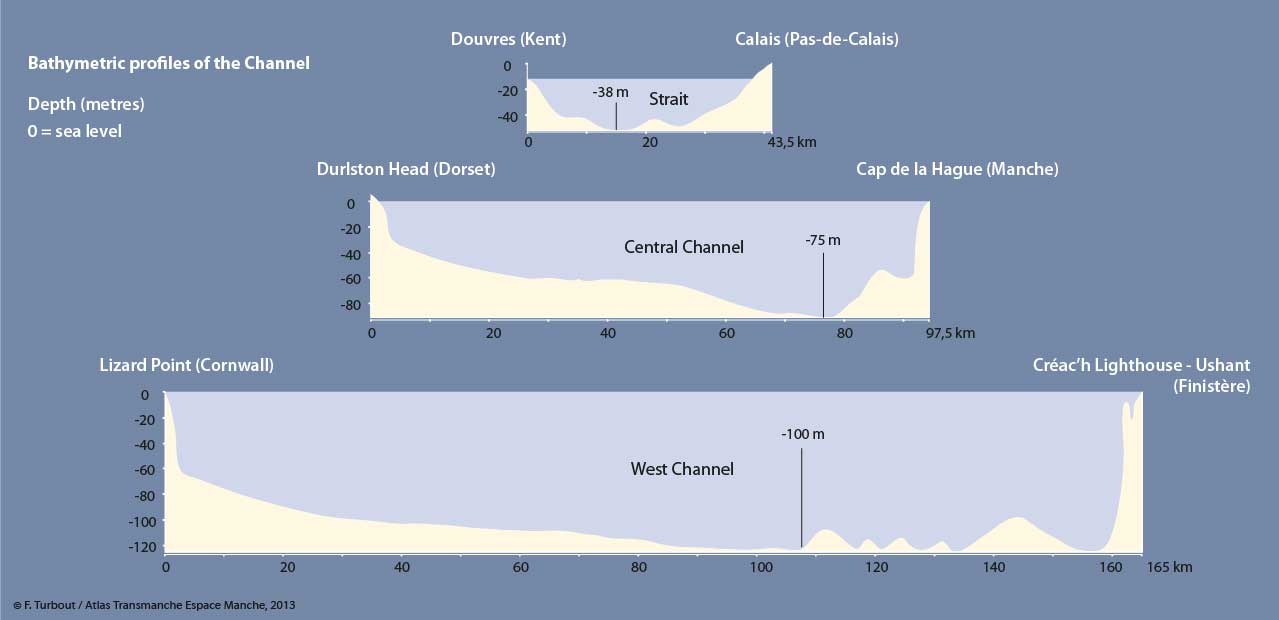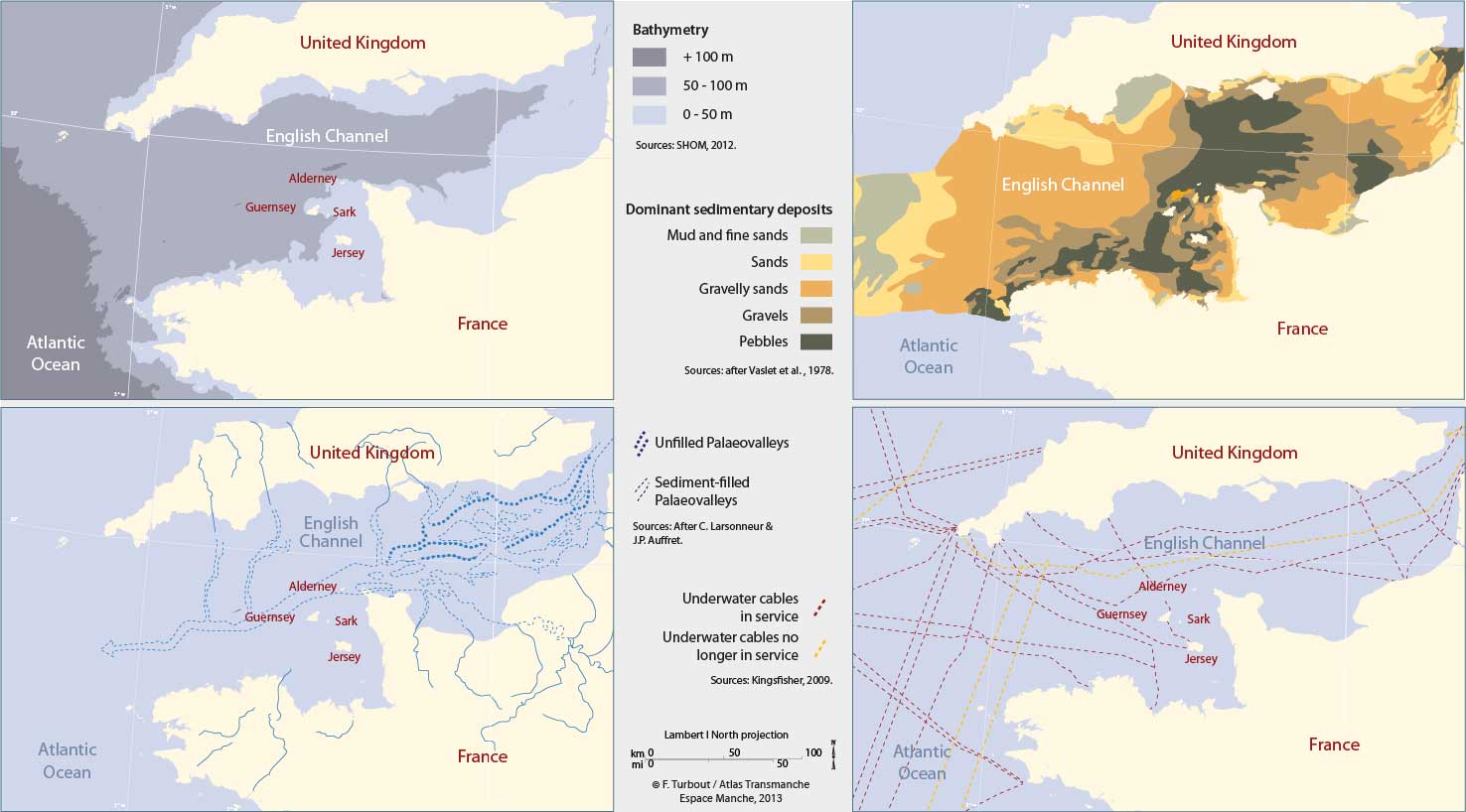

 Presentation
Presentation- Administrative geography (2019-2020)
- Coastline in figures
- Découpage administratif (2016) FR
- From Land's End to the Strait
The Channel is a small epicontinental sea of modest dimensions. Covering a surface area of around 75 000 square kilometres, it stretches some 500 km between the point it opens onto Atlantic Ocean and the Dover Strait. Its width ranges from 150 km across its western approaches to 32 km between Dover and Calais, widening centrally to 250 km between the Bay of St Malo and Lyme Bay.
Water depths remain relatively shallow – 38 metres deep in the Strait and gradually dropping to 100 metres between the Lizard and Ushant. Here, at the edge of the continental shelf, the sea-floor rises steeply from the depths of the Atlantic, producing strong currents which, combined with high tidal ranges, have long eroded the adjacent coasts.
The formation of the Channel dates back to the last Ice age when there was already a long gulf reaching in from the Atlantic where the Western Channel emerges. To the East, a vast fresh-water lake fed by glacier melt-waters from the North was ponded back behind the Weald-Artois ridge. The sudden breach of the latter unleashed a megaflood, the first of several such devastating events over 400 000 years ago, revealed today by the existence of a huge palaeovalley gouged out of the chalk bedrock. It would result in the re-routing of the hitherto combined Rhine-Thames river system through the new Channel.
Relief-wise the submarine floor remains generally level in profile, apart from the deep axial troughs off the Cotentin Peninsula (Hurd Deep), the sand banks in the Strait and the many rocky islands and reefs. The geology of the sea-bed is primarily sedimentary and sandy with occasional rocks outcrops on the French side, ideal for the development of spawning sites. Indeed, these sites are particularly suitable for the development of a great many halieutic species. Depending on the zone in question, there are on average in each of the latter between 10 000 and 70 000 fish, cephalopods and crustaceans living and breeding each year. (CGFS IFREMER-CHARM research programme). This underwater living world exists alongside the extensive spider's web of multiple telecommunication cables (which may or not be operative) criss-crossing the sea bed.
top














